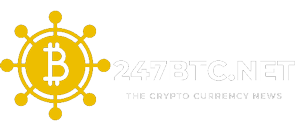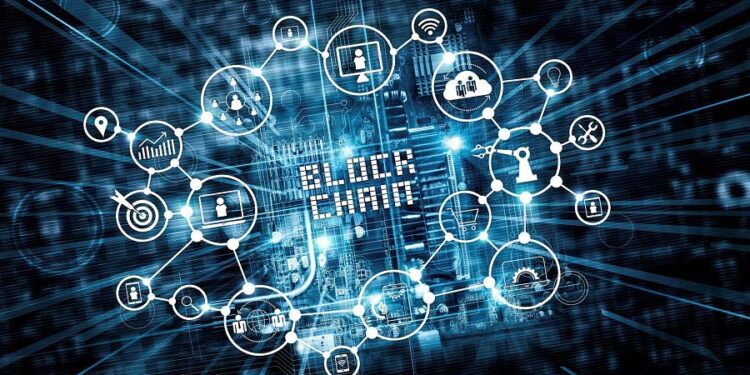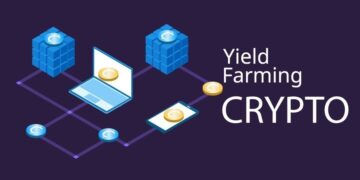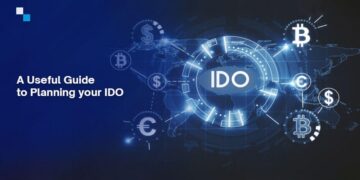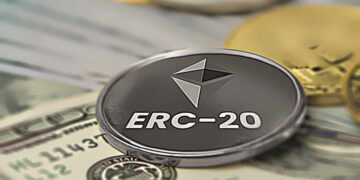The term “blockchain” has become a common phrase among investors in the cryptocurrency market, and is generally recognized even by those who may not actively invest. The functioning mechanism of blockchain, and the impact of its emergence on the economy, are factors of interest. What precisely are the operations of blockchain and what modifications has this technology brought about in the economic system?
Table of Contents
ToggleWhat is Blockchain technology?
Blockchain technology facilitates the secure sharing of data by storing it in a database and recording transactions in a ledger. A blockchain is a type of distributed database or ledger that distributes the power to update the blockchain among the nodes or participants of a public or private computer network. This technology, known as distributed ledger technology or DLT, is currently one of the leading trends in technology. The nodes involved in the blockchain system receive digital tokens or currency as an incentive to make updates to the blockchain.

The implementation of blockchain technology facilitates the enduring, unalterable, and translucent documentation of data and transactions, thereby enabling the seamless exchange of any valuable asset, be it a tangible object or an intangible one.
A blockchain is defined by three core features. The first of these attributes requires the underlying database to be secured using cryptography. This essentially means that accessing or adding data to the database necessitates the use of two specific cryptographic keys. The first key, or public key, represents the unique address within the database. The second key, or private key, is a personal key that need to be verified by the network as an authorized source.
A blockchain is essentially a digital ledger or database used for tracking transactions that occurs solely through online means.
A blockchain is a type of database that is shared across a public or private network, with the Bitcoin blockchain being one of the most widely recognized public blockchain networks. It is available for anyone to access and join by opening a Bitcoin wallet or becoming a node on the network. In contrast, private blockchains are more suitable for the banking and fintech industries, where participants need to know who is taking part, who can access data. And who has a private key to the database. Additionally, there are consortium and hybrid blockchains which combine properties of both public and private blockchains.
According to research conducted by the McKinsey Technology Council, it is projected that by 2027, as much as 10 percent of the world’s GDP could be linked to transactions enabled by blockchain technology. Yet, amidst the constantly evolving landscape of blockchain. It is crucial to distinguish between genuine innovation and mere hype. In order to leverage the potential benefits of blockchain technology. Businesses must explore how it can help them enhance operational efficiency and generate value. The following text offers insights on this matter.
Why Blockchain technology data cannot be changed?
The technology of blockchain has been defined as an incorruptible system for conducting transactions that is not reliant on third-party entities. Or as a series of linked transaction data blocks. These definitions bring attention to the outstanding features of blockchain technology. However, they merely scratch the surface of its potential capabilities.

To gain a comprehensive understanding of Blockchain’s operations, it is imperative to have knowledge of the data it records. Generally, a Blockchain records three basic pieces of information in a transaction: the transfer of funds from Wallet A to Wallet B, the amount of the transaction, and the transaction’s content, if any. So far, the only information recorded on a Blockchain has been the transfer of funds, addresses, and balances.
One unique feature that allows it to operate 24/7 is its utilization of numerous Nodes (computers) spread across the world, achieving a decentralized nature and eliminating the need for third-party intermediaries such as banks or governments. These Nodes continuously verify new transaction information, then identify the corresponding Hash (hashing function) in order to link the Blocks together.
In simple terms, Blockchain technology functions like a ledger with every individual in the system having a copy of it. Thus, the transaction history is readily accessible, rendering any attempt to modify one’s copy of the transaction meaningless. Further, all nodes running on the system have equal rights in data authentication, and any endeavor to tamper with authenticated data is impossible unless there is a severe breach.
How has blockchain changed traditional transactions?
The technology behind the Blockchain operates on the principle of decentralization, where the algorithm for recording data and maintaining ledgers is stored across all network nodes. This decentralization is a defining characteristic of the technology. However, despite this structural feature. There still exists a need for a large-scale transaction system that involves the exchange of currency on a global level. To shed some light on this matter, it is crucial to make certain comparisons and observe the far-reaching impacts of Blockchain on the transaction processes worldwide.
Traditional transaction
Traditional transactions refer to exchanges carried out using legal tender – a form of currency provided by the state and government. Such transactions can include direct exchange “money-for-goods” or the use of banks and other money transfer apps. These are typically routine procedures familiar to all of us, to the extent that we often consider them as the most optimal and exclusive transaction methods available.

However, traditional transactions also have their limitations, such as the inability to use domestic legal tender to transfer money to relatives in other countries. Possible solutions include international bank transfers or using international money transfer apps, such as PayPal. But these services usually charge transaction fees based on a percentage of the amount transferred, with higher fees for larger amounts. Moreover, these accounts may be subject to freezing and require complex procedures for large overseas transactions, as centralized currency control is currently in effect.
Conventional transactions are only convenient for household expenses or small-scale transactions, however, they fail to meet the greater needs of investors.
The emergence of Blockchain
The introduction of blockchain technology has brought about remarkably positive changes in transaction processes. This is primarily due to its real-time nature, transparency, fairness, security and most importantly. Its resistance to maintenance issues that are typically faced by centralized systems such as banks and money transfer apps. Bitcoin, utilizing blockchain technology, has excelled at its mission of transferring millions of dollars per second across the globe, running uninterruptedly for over 12 years now, without any reported errors or loss of user assets.

Whilst fiat currencies are subject to government intervention and may be restricted in certain regions or limited in transaction amounts due to political reasons. Cryptocurrencies have the potential to overcome all barriers, enabling seamless transactions without requiring complex procedures, incurring high costs, or imposing waiting periods.
Apart from its inexpensive cost and fast transaction speed. Blockchain is being increasingly trusted for its ability to protect the rights of users. By digitizing wallet addresses, transaction data can be both transparent and secure while still protecting the user’s identity.
In summary, the algorithm system, ledger storage, and Node scope collectively create a smooth and convenient transactional experience, while also providing user anonymity for the breakdown of legal barriers. Together, these components form a technology with the utmost potential for optimizing transaction processes.
Blockchain technology is being applied in which field?
Financial services such as bank transfers or money transfers via apps are applications that are realizing their shortcomings. And gradually researching to convert to using blockchain technology in traditional transaction processes. However, besides financial services, blockchain technology has also been widely applied in other fields to optimize data management and information control as much as possible. Some industries that have applied blockchain technology include insurance, healthcare, digital infrastructure, transportation & logistics.
Blockchain’s storage mechanism
How do miners keep a proper record of their financial transactions?
As previously asserted, Blockchain can be likened to a ledger where all information is recorded and stored permanently, without the possibility of alteration. An explanation of ledger functionality and how the transcribing of transactions is as simple as Node “recording” the information will be provided.
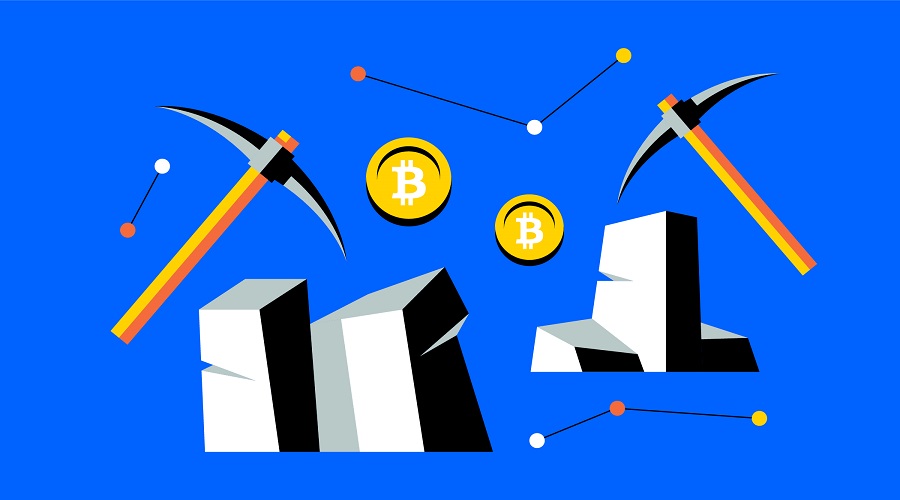
For accountants, the general ledger is where all transactional information of a business is kept. Similarly, the Blockchain also contains transactional information of all participants. However, instead of recording information conventionally, Nodes or Miners encrypt the information in the block and link the blocks together using SHA -256 Hash codes. If someone tries to alter a transaction, the hash function will change, causing the hash code of that block in the chain to no longer match, thus alerting nodes in the network immediately.
Hash will be some sort of this:
000000000000000000069dc17433be656655a274688a809b9e94e691d8ae12b0
This is a sequence comprising of 64 characters, and even a slight modification in the transactions within the block will immediately alter the Hash value. Thus, this feature serves as an indicator for detecting any tampering in the blockchain.
The aforementioned code refers to the cryptographic puzzle that a Miner must solve in order to add a new block to the Blockchain. The presence of 19 zeros at the beginning of the code signifies the difficulty level of the Hash function that the Miner must decipher. Therefore, faster computational power is required to solve the puzzle successfully.
Once the miner has successfully decrypted the Hash, the Nodes assess the validity and agree on the result before adding the block to the chain. The miner is then rewarded with a corresponding block reward. The current time required to discover a new Bitcoin block is approximately 10 minutes. This information is presented in an informative style with a formal tone.
Genesis Block
The term used to refer to the primordial block of Bitcoin is the foundation upon which the entire Bitcoin transaction system is built. And serves as the template for all subsequent blocks in the chain. At this point, the creator of Bitcoin – Satoshi Nakamoto – left a mysterious message in the raw data of the block “The Times 03 / jan / 2009 Chancellor on the brink of a second bailout for banks.” This information is conveyed in a formal style with an informative tone.
It is widely believed by the community that this message is aimed at an article published on January 3, 2009 in The Times (London). The article revolves around how the UK government failed to stimulate economic growth after the financial crisis in 2007-2008. This is considered a declaration by Bitcoin in bringing significant differences compared to large investment banks that required government bailout packages in 2008.
Up to the present time, the legacy left by Genesis Block encompasses the value of fairness, transparency, and integrity – key characteristics that financial services providers would benefit from adopting after overcoming inevitable challenges.
Blockchain Algorithms
The algorithm has been in existence for a long time and extensively applied in the field of mathematics and computer science to produce highly optimized products. An algorithm is a set of rules, calculations or programming languages designed in a precise process to govern the operations of a sequence. It is possible that with this definition, one may find it difficult to understand the concept. Hence, let us identify specific algorithms used in Blockchain technology to gain a clearer understanding.
POW – Proof Of Work
This is an algorithm that has been in existence for a long time and is a consensus mechanism that provides the highest level of security in cryptocurrencies, since Satoshi completed the Genesis Block. This algorithm requires nodes to use the computational power of supercomputers, electricity. And time to find a suitable sequence of numbers, and then send proof of their work to the entire network.
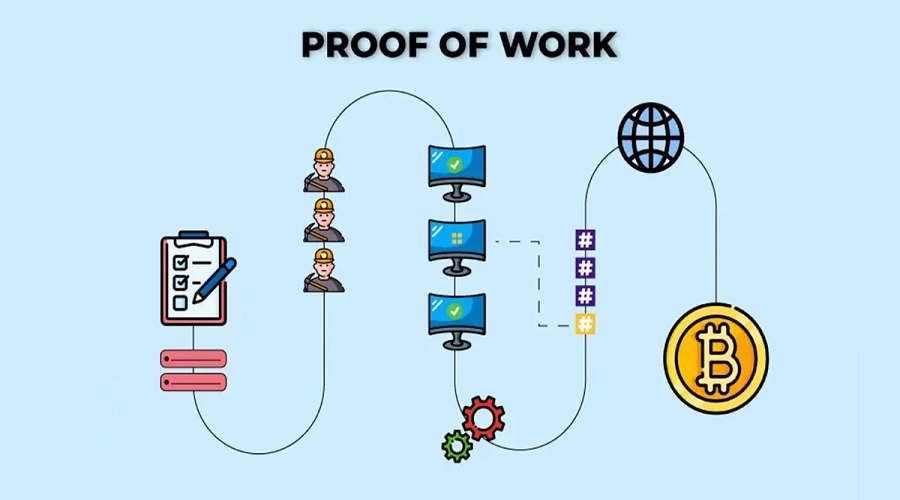
To put it simply, in the context of Bitcoin’s Blockchain system. A Miner must possess specialized coin-mining equipment that consumes significant amounts of electricity. And time to search for a valid hash function and send proof of the work completed to the entire network (i.e., proof of when and how long they found the hash function). Upon completing the process, the Miner will receive a predetermined amount of coins as per the network’s regulations, as a form of reward for solving the puzzle.
POS – Proof Of Stake
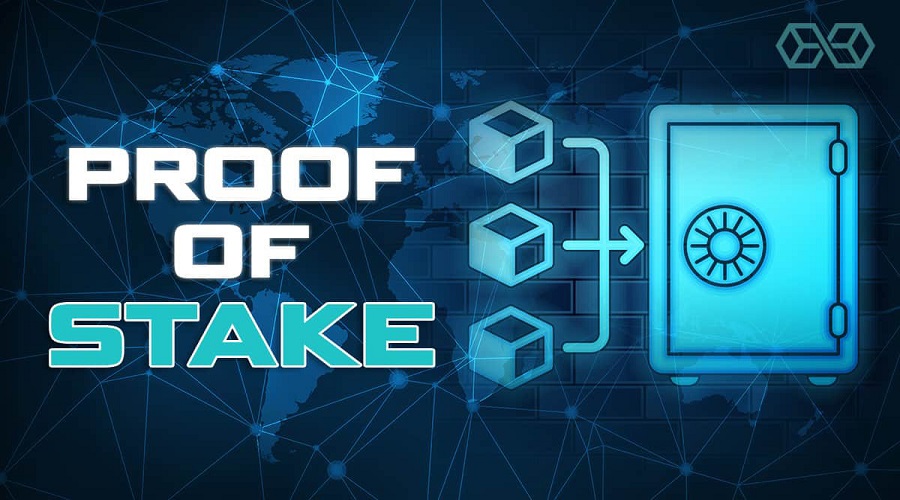
In 2011, a novel algorithm was introduced for the first-ever cryptocurrency to deploy this model, namely Peercoin. Fundamentally, this algorithm obviates the need for participants to invest in computationally intensive machines like POW. But requires them to Stake (lock) a specific amount of tokens to own a stake in the network. Consequently, they have greater autonomy in selecting and validating Blocks. Of course, miners will still receive system rewards subsequently.
POA – Proof of Authority
The Proof of Authority (POA) is a variant of the Proof of Stake (POS) algorithm. However, instead of staking tokens into the system, miners are required to stake their “reputation” in order to be recognized as Validators of the network. This necessitates them to verify their identity and establish or demonstrate their level of credibility with the network. This not only helps to expedite transaction time as the number of nodes in the system is limited, but it can also assist miners in reducing a significant amount of investment costs. Conversely, this algorithm also impacts the decentralization of the Blockchain.
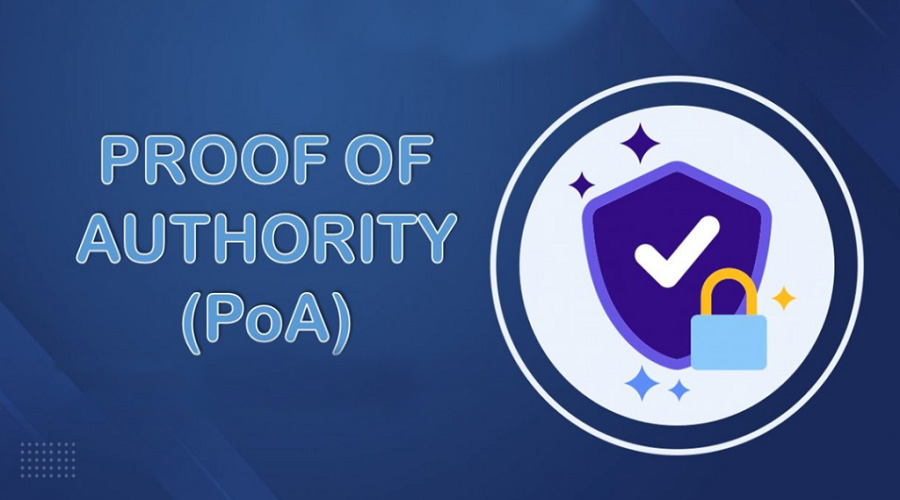
POB – Proof of Burn

This algorithm enables participants to transfer value through the destruction of value. While the definition may seem complex, the process is actually quite simple: one simply deposits a designated amount of coins into a special wallet, known as an Eater Address, to support a new cryptocurrency. This wallet, which is randomly generated and lacks a secret key, is also referred to as a “dead wallet.” For instance, if one has 6,500 USD worth of BTC, they may transfer it to an Eater Address to support Token X, which is initially launched with 1,000 units valued at 0.1535 BTC each. Further information on this algorithm can be found at the provided link.
Structure of current blocks
The Block consists of various components, each of which requires structure assurance in the following manner:
Block Header
One may consider this as the head section of a blockchain with a fundamental role in interlinking various blocks. The five primary components of a block header are as follows:
- The software version serves as a crucial element that enables mining tools to indicate supported protocol decisions accurately.
- The previous block’s hash function involves visualizing the presence of two blocks, namely Block 1 and Block 2. Consequently, the hash function of Block 1 will be embedded within the hash function of Block 2 to ensure the necessary continuity and cohesion between them. This step is essential for maintaining the optimal alignment and coherence between the two blocks.
- The Root Hash refers to the root hash function of the Merkle tree, which can be characterized as a representative hash function for all the information within the blockchain. Consequently, all transactions within the block can be aggregated into this hash function.
- The timestamp is a time indicator in the block, measured in seconds and dated from January 1, 1970.
- The term “nonce” refers to a randomly generated value that miners attempt to exhaustively iterate through in order to discover a valid hash function for a block. This process is crucial for maintaining the integrity and security of the blockchain network.
Block Body
The body of the blockchain, also known as the ledger, is the repository for all confirmed transactions. In essence, it stores essential details such as the wallet address, transaction amount, and content. These pieces of information are crucial for the miners to verify whether the sender meets the necessary criteria to execute the transaction.
For instance, if a person desires to transmit 10 BTC, the Miner can review the Block Bodies of the previous Blocks to verify that they indeed possess a minimum of 10 BTC. This process ensures the accuracy and legitimacy of the transaction.
Current versions of blockchain
Blockchain version 1.0
The initial rendition of Blockchain technology is evidenced by the first iteration, which was featured in the Bitcoin Blockchain. In this case, the Distributed Ledger Technology has been employed to serve as the decentralized ledger for the cryptocurrency, resulting in Bitcoin becoming the “Internet currency” and ushering in a new era for digital currency.
Blockchain version 2.0
For those who have delved into the world of Crypto market, the cryptocurrency that definitely follows Bitcoin is Ethereum. It can also be regarded as a representative of Blockchain 2.0 – Smart Contract. This is a significant step in the development of Blockchain as it creates applications that are capable of autonomous, decentralized, intermediary-free operations, impervious to malicious intrusions, and drastically reduce costs for verification, operation, and so on.
Blockchain version 3.0
The emergence of Dapp (decentralized application) has been a consequential shift following the advent of Smart Contracts. The current version of Dapp has effectively taken advantage of the strengths of Smart Contracts in conjunction with Front-End technology (using programming languages to create user interfaces). Dapp is surely a well-known term for those who have been or are currently delving into the crypto market.
Blockchain version 4.0
Similar to the message conveyed by the fourth industrial revolution, this latest version of Blockchain is currently the most advanced technology that can be practically applied when combined with IT systems, enabling favorable conditions for business operations, cross-platform and cross-chain transactions. The most evident examples of this version are automated order processing systems and payment methods based on authentication requirements.
With the aforementioned insights, undoubtedly, you have undergone a diligent research and in-depth exploration of the underlying mechanism of Blockchain. As a result, it is hoped that you have attained a more nuanced and perspicacious understanding of this remarkable technology.
Who discovered electrons protons and neutrons?
The discovery of neutrons, which possess no electric charge and nearly the same mass as protons while remaining electrically neutral,...
Read moreWho is the painter of The Mona Lisa?
The Louvre Museum houses one of the most iconic portraits in the history of art, namely the Mona Lisa painting....
Read moreWho makes Genesis vehicles?
The Hyundai Motor Group produces luxurious automobiles under the name of Genesis. In 2015, the company announced its intention to...
Read moreWho discovered United States of America?
The response to the aforementioned inquiry appears to be apparent for the majority of individuals, as they were educated in...
Read moreWho created the first atomic bomb formula?
The journey towards the creation of the atomic bomb was initiated by a moment of profound realization in London. Subsequently,...
Read moreWho has the most followers on instagram in the world?
In response to an inquiry of utmost interest, it has been revealed that the individual with the most followers on...
Read moreQuotes about friends who are fake
The end of a friendship can be an excruciatingly painful experience, potentially overshadowing other kinds of heartbreak. The betrayal of...
Read moreWho is the top 10 richest people in Asia?
The ever-changing wealth landscape in Asia has continually garnered international attention, as a vast number of individuals have left their...
Read moreWho is the most richest person in the world currently?
With a net worth of $239.3B, Elon Musk currently holds the top position on the list of the world's wealthiest...
Read moreHow deep is the wreck of The Titanic?
On April 15, 1912, the RMS Titanic endured a tragic fate in the North Atlantic Ocean as it collided with...
Read moreThe biggest country in the world by population
Data published by the World Bank reveals that in 2021, the 25 most populous countries in the world accounted for...
Read moreWhat is Yield Farming? Gain a comprehensive understanding of the terminology associated with Yield Farming
The concept of Yield Farming, prominent Yield Farming platforms, and the associated risks and opportunities are explored in this article,...
Read moreWhat is Initial DEX Offering (IDO crypto)? Does playing IDO really give you a 100% chance of winning?
One may inquire as to why the Initial DEX Offering (IDO) has gained widespread popularity and whether investing in IDO...
Read moreWhat is ERC – 20? Advantages, disadvantages & how to create ERC- 20 network tokens
In this article, we will explore ERC-20 and ERC-20 tokens along with their applications and advantages and disadvantages. For those...
Read moreWho is Jed McCaleb? A biographical profile detailing the founder of Ripple, Mt. Gox, and Stellar
Recently, Ripple is a name that should not be unfamiliar to cryptocurrency users as it has been a long-standing name...
Read more